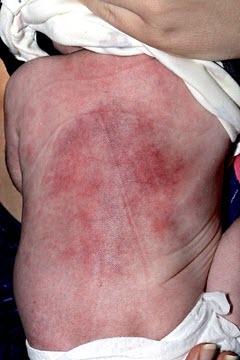(BMJ)—A well 13-day-old boy presented w/ indurated, violaceous lesions on his back, along w/ hypercalcemia. The rash was initially treated as cellulitis, and he required IV fluids to correct the calcium. What was the dx?

|
Erysipelas
|
|
Sclerema neonatorum
|
|
Infantile hemangioma
|
|
Subcutaneous fat necrosis
|
|
Farber disease
|
